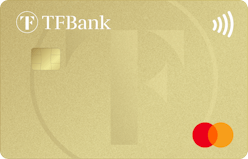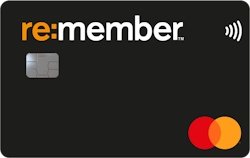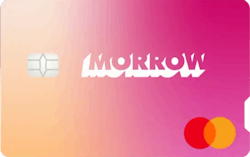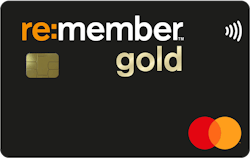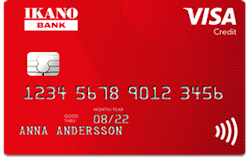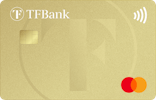The Best Free Credit Cards 2025
Here are the Norwegian credit cards without an annual fee.
- Eff. Rente 26,69% kr 25.000/12 mnd, kost. 3 337 totalt kr. 28 337
TF Bank Mastercard
Sammenlign- Maks kreditt 150 000 kr
- Årsgebyr 0 kr
- Effektiv rente 26,69 %
- Rentefrie dager 43 dager
- Effektiv rente 24,4 %, 15 000 kroner over 1 år. Kostnad: 1 849 kroner. Total: 16 849 kroner.
Bank Norwegian
Sammenlign- Maks kreditt 150 000 kr
- Årsgebyr 0 kr
- Effektiv rente 24,40 %
- Rentefrie dager 45 dager
- Eff. rente 30,33 % basert på et eksempel på kr 15 000 nedbetalt over 12 måneder. Kostnad kr 1 717 Samlet kredittbeløp vil da bli kr 16 717.
re:member Black
Sammenlign- Maks kreditt 150 000 kr
- Årsgebyr 0 kr
- Effektiv rente 30,33 %
- Rentefrie dager 45 dager
- Du skal betale tilbake 12 000 kroner på 12 måneder, med en effektiv rente på 28,77 %. Kostnad for delbetaling blir 1 726 kr, som gir en total pris på 13 726 kr.
Morrow Bank kredittkort
Sammenlign- Maks kreditt 100 000 kr
- Årsgebyr 0 kr
- Effektiv rente 28,77 %
- Rentefrie dager 50 dager
- Eff. rente 23,81 % basert på et eksempel på kr 15 000 nedbetalt over 12 måneder. Kostnad kr 1 407. Samlet kredittbeløp vil da bli kr 16 407.
re:member Gold
Sammenlign- Maks kreditt 150 000 kr
- Årsgebyr 0 kr
- Effektiv rente 23,81 %
- Rentefrie dager 45 dager
- 15 000 kr o/12 md gir eff. rente 24,55 %, kostnad 2 001 kr, totalt 17 001 kr.
Ikano Visa
Sammenlign- Maks kreditt 100 000 kr
- Årsgebyr 0 kr
- Effektiv rente 24,55 %
- Rentefrie dager 50 dager

What Does a Free Credit Card Mean?
It is free to make a transaction with a credit card. Nevertheless, there may be some costs associated with the credit card. Some cards charge you a fee for cash withdrawals, while others include a fee for exceeding the credit limit, a fee for paper invoices or an annual fee for owning the card. There are also cards that have dropped all of these fees. It is a card of this type that is referred to as a free credit card.
Advantages of Choosing a Free Credit Card
There are approximately 300 different credit cards in Norway and there is a wide range between the costs. Some will cost you a lot, while others are completely free. These are the advantages of choosing a free credit card:
- The credit card comes with no annual fee, which means that it is completely free to own.
- There are no fees for purchases (except for currency conversion fees abroad.)
- Many free credit cards include free insurance, bonuses and cashback.
- The card can act as a buffer and contribute to financial flexibility.
A free credit card is especially recommended if you do not plan to use the card frequently. Then you avoid paying for a card you don't use, or a card whose benefits you don't use.
Fees that Come with Credit Cards
Annual Fee – The annual fee on a credit card is an amount that the card issuer charges the cardholder once a year to cover the administrative costs associated with the credit card. The amount of the annual fee can vary greatly depending on the type of card, the benefits offered, and the card issuer. Some credit cards offer no annual fee, while others may have higher annual fees, which are often associated with premium cards that offer additional benefits such as insurance, bonuses, higher points earning, or access to VIP services and lounges.
Currency surcharge - When you use your card to make purchases or withdraw money in another currency than NOK, a fee called a currency surcharge will appear. You cannot avoid this fee, no matter which card you end up ordering. The currency surcharge is to cover the card issuer's costs, which is called currency risk. The bank or credit card company takes a risk when they allow you to use another currency. The currency surcharge is to ensure that they do not lose money on currency fluctuations during the time it takes for the transaction to go through.
Invoice Fee – This fee appears if you choose to receive paper invoices. The cost is often 30 NOK, or more, per invoice. Many credit card companies offer an option to receive the invoice electronically through email or directly to your online bank. By choosing this solution, you can often avoid fees associated with paper invoices.
Cash withdrawal fee – Several of the Norwegian credit cards charge you a fee every time you withdraw cash with the card, either at an ATM or over the counter. Some card companies charge a fee for all withdrawals, while others charge a fee every time the withdrawal is made in Norway. The price is often 1% of the amount you withdraw plus 30 to 40 NOK.
Fee for transferring money to a bank account – You can transfer money from most credit cards to a bank account. In many cases, this costs money. The transfer fee is usually around 40 NOK per transfer.
Overdraft fees – Some banks and credit card companies charge customers a fee if they use more credit than their card's credit limit allows. The cost is often a percentage of the overdraft.
Calculate the Cost of Credit Card Debt
Interest on the outstanding amount on a credit card is an important cost. However, this is not a fee. Interest is the rent you have to pay to borrow money from the bank or card company. You can easily avoid this cost. All you have to do is pay off everything you owe on the card before the interest-free period is over.
To find out how much your credit card will cost each month, you can use our credit card calculator.
Velg kredittbeløp
Is Credit Cards Free to Use Abroad?
No, a credit card is never completely free to use abroad, but this also applies to bank cards. For all transactions you will be charged a currency surcharge, which is a fee you pay when you buy a product/service in a different currency.
Without the currency surcharge, banks could end up in the red on your transactions, which is of course not something they want to risk. The currency surcharge can, however, vary, and is often somewhere between 1.5–2%. In many cases, credit cards have a lower currency surcharge compared to bank cards.
Other common fees are cash withdrawals, which are often charged as a fixed amount and/or a percentage. However, there are free credit cards with free withdrawal fees, such as Bank Norwegian and TF Bank Mastercard.
Save Money by Choosing the Right Credit Card Abroad
The best way to avoid high fees abroad is to choose a card with a low currency surcharge and no withdrawal fees. However, you should be aware that most credit cards do not offer an interest-free period for cash withdrawals, which means that interest accrues on the same day.
In addition to being much safer to use your credit card abroad, you can also save a lot of money. Just make sure to read the terms and conditions beforehand so that you don't get any unpleasant surprises later.

The Best Free Credit Cards in Norway
Many of the best credit cards are also completely free. The list below gives you an overview of the best credit cards on the market without an annual fee:
| Årsgebyr | 0 kr |
|---|---|
| Rente | 22,65 % |
| Effektiv rente | 26,69 % |
| Maks kreditt | 150 000 kr |
| Rentefrie dager | 43 dager |
| Årsgebyr | 0 kr |
|---|---|
| Rente | 21,99 % |
| Effektiv rente | 24,40 % |
| Maks kreditt | 150 000 kr |
| Rentefrie dager | 45 dager |
| Årsgebyr | 0 kr |
|---|---|
| Rente | 25,57 % |
| Effektiv rente | 30,33 % |
| Maks kreditt | 150 000 kr |
| Rentefrie dager | 45 dager |
| Årsgebyr | 0 kr |
|---|---|
| Rente | 26,90 % |
| Effektiv rente | 28,77 % |
| Maks kreditt | 100 000 kr |
| Rentefrie dager | 50 dager |
How do Banks Make Money Without Annual Fees?
Even though banks offer credit cards with no annual fee, they make money in several ways. This includes through interest income, certain fees and partners:
- Interest income: There are more customers who do not pay the money they borrow by the deadline, either by forgetting to repay or because they need the money for a short period of time. Credit cards have high interest rates on credit, and earn good sums by lending out the credit. This is the banks' largest source of income.
- Other fees: Banks can make money from withdrawal fees, currency surcharges and transfer fees.
- Partners: Several credit cards offer good discount and bonus schemes. This is a great advantage for you, as you get cheaper goods. At the same time, banks earn from you purchasing goods/services through their partners.
How to Avoid Unnecessary Fees
Although banks make money from their services, this does not necessarily have to be a disadvantage for you. You can easily avoid paying interest by repaying what you borrow within the interest-free period.
When it comes to the stores they cooperate with, this is a win-win situation for both parties. The banks profit from you shopping at these stores, while you get discounted prices or bonuses on your purchases.
Unfortunately, some of the fees are impossible to avoid, but this also applies if you use a regular bank card. However, it may be worth choosing a card with low fees.
Benefits You Miss Out On with a Free Credit Card
For the vast majority of consumers in Norway, a free credit card is the most profitable. However, there are people with a lifestyle that makes it worthwhile to have a credit card that costs money, because of the benefits that come with it. Here are some of the benefits that you miss out on with a free credit card:
- Airport lounge access: There are no credit cards with no annual fee that offer free airport lounge access. However, you would have to travel frequently for it to be worth the cost.
- Concierge service: Some premium credit cards offer concierge services where you can have someone plan trips, book restaurant reservations and find events on your behalf.
- Exclusive events: As the owner of a high-end credit card, you will receive invitations to exclusive events, something you will not get with a free credit card.
Is It Worth Paying The Annual Fee?
It may be worth paying for a credit card if the annual fee is lower than what you will save over the course of a year. Before you choose a credit card that costs money, you should make sure that the benefits they offer are something you will need. Get out your calculator and calculate whether the benefits are worth the price you pay.
Most people who will benefit from a card with an annual fee are people who either travel a lot or spend large amounts of money on their credit card.

Who Should Apply for a Free Credit Card?
It turns out that most of the best credit cards in Norway are also free. That’s why these cards are suitable for most people. Unless you're tempted by luxurious services so frequently that the annual fee is worth it, choosing a free credit card is a smart decision.
Comparison of Free Credit Cards
Even if a credit card is free, there will always be some fees involved. Below, we compare the costs of the best credit cards with no annual fee, so you can more easily find a card that suits you.
| Free Credit Cards | Currency Surcharge | Cash Withdrawals | Effective Interest rate | Interest-free period |
|---|---|---|---|---|
TF Bank Mastercard | 1,75 % | 0 % | 26,69 % | Up to 43 days |
Bank Norwegian | 1,75 % | 0 % | 24,40 % | Up to 45 days |
re:member black | 2,00 % | 1,00 % + 35 kr | 30,33 % | Up to 45 days |
Morrow Bank Mastercard | 1,75 % | 0 % | 28,77 % | Up to 50 days |
Trumf Kredittkort | 1,90 % | 1,50 % + 35 kr | 27,19 % | Up to 45 days |
Summary
Most Norwegian credit cards are free to own and use. You can avoid most fees quite easily if you’re a smart consumer. If you want to be on the safe side, you can choose a card that has eliminated all fees – in other words, a free credit card.
Frequently Asked Questions

Bengt er en kreativ innholdsprodusent med en bachelor i økonomi. Etter å ha startet karrieren i banksektoren, fant han lidenskapen i å formidle fakta om kredittkort og personlig økonomi. Bengts hovedansvar er å innhente så mye data som mulig om kredittkortene vi presenterer.
Favorittkort: Bank Norwegian
